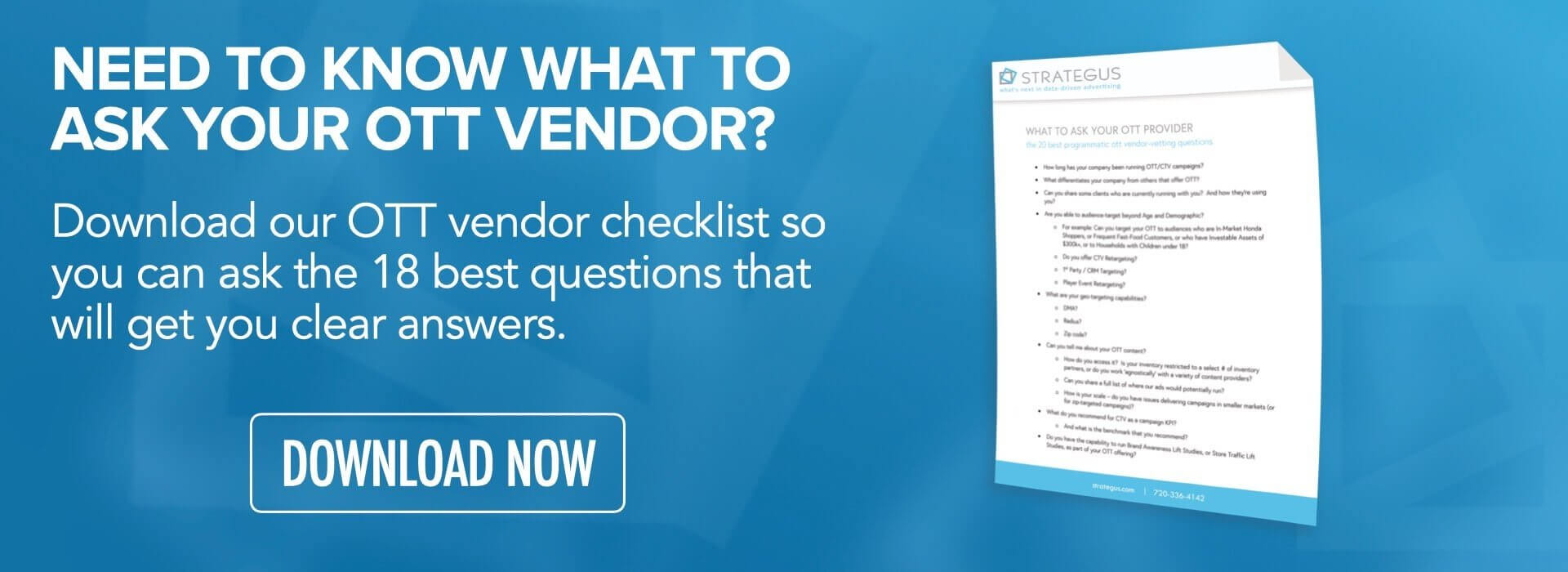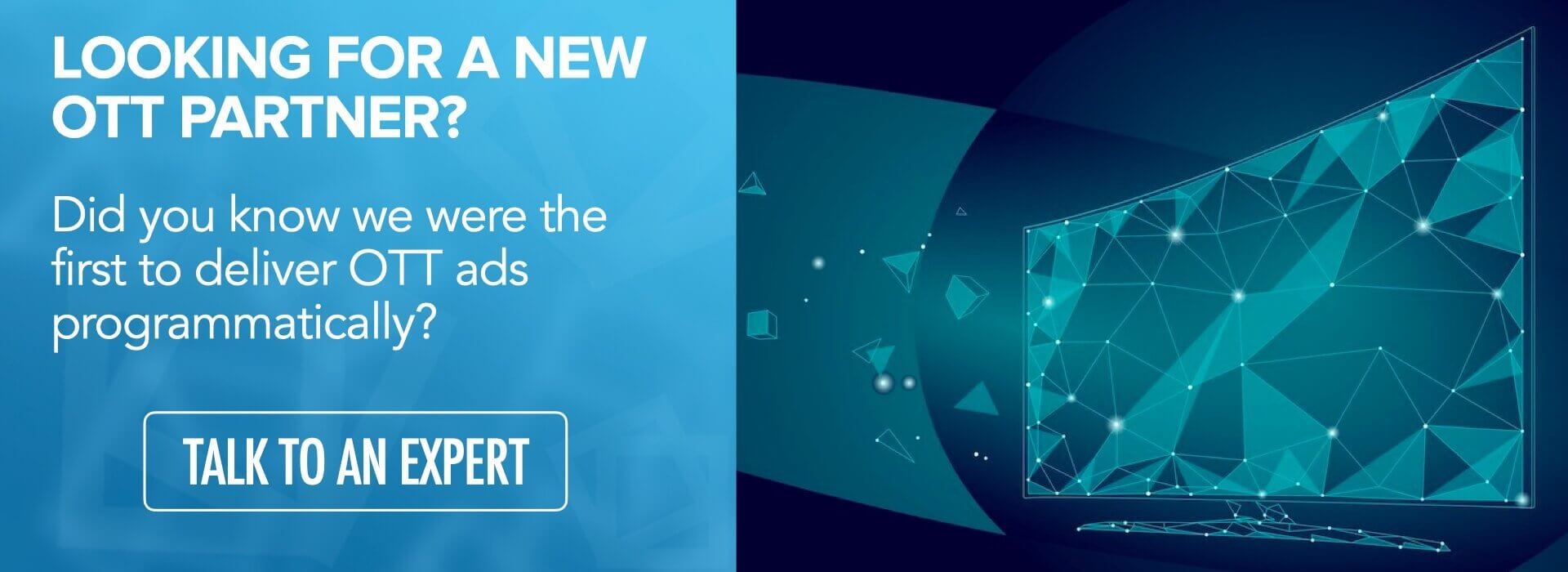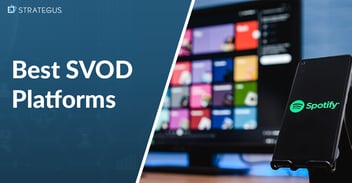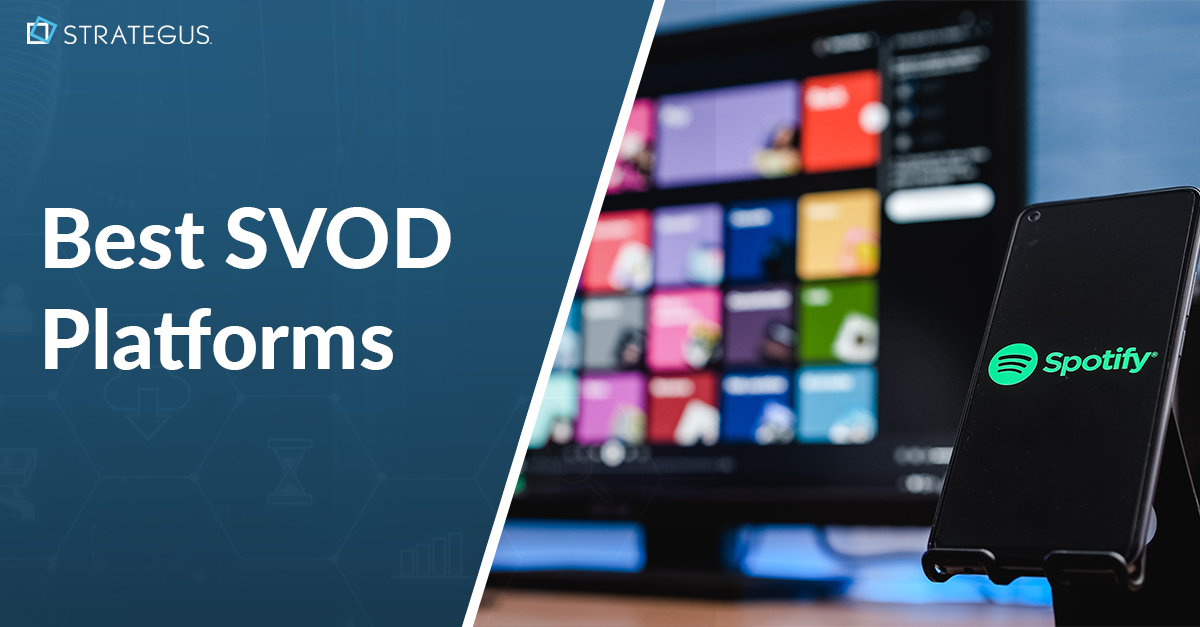- Home
- Strategus Blog
- OTT Ad Metrics Explained
OTT Ad Metrics Explained
 Andy Dixon
Andy Dixon
4 minutes read

Since 2017, over-the-top (OTT) services have dominated video ad views in the U.S. These streaming platforms combine the best of both worlds: the real-time reporting and hyper-targeting capabilities of digital video with the full-screen, immersive experience of linear TV.
Yet, OTT measures ad performance differently than any of its predecessors. Traditionally, advertisers relied on limited demographics, guesswork, and probabilistic matching to draw lines between TV spots and consumer behavior. Through OTT, data has changed everything. Advertisers can now use programmatic buying, real-time bidding, and key performance indicators (KPIs) to track results and optimize their ad spend in real time.
This surge of intelligence is making the OTT ad landscape increasingly complex and diverse. When every touch point and action can be monitored, the resulting list of jargon-filled metrics can become overwhelming. Are they all directly relevant to success?

In truth, ad buyers need to focus on engagement and return on investment (ROI). Here’s a quick breakdown of the two most essential metrics to measure OTT campaign performance:
Video Completion Rate
Video Completion Rate (VCR), or the average amount that a video ad is watched all the way through, are often in the 90% to 100% range. This shouldn’t be surprising given OTT’s inherent advantages. On devices like Roku, smart TVs, and gaming consoles, sessions are always viewer-initiated. Each interaction is driven by user-selected content and is often watched on a full-sized screen. This means that video ads are often non-skippable and 100% in-view because there is no option to minimize or switch between tabs. In other words, it nearly guarantees an engaged audience.
However, this doesn’t mean viewers’ eyes always stay glued to the screen. A consumer can still close the app, turn off the device, or opt for another episode or movie to watch. It’s unlikely to achieve a 100% completion rate.
Ad buyers should keep a close eye on VCR and use the data behind this gap to their advantage. What demographics make up the percentage of viewers who turned their attention elsewhere? At what point of the video ad did viewers fall off? These questions can help advertisers structure their content to front-load key messages in their ads or target different viewer segments.
Attribution Tracking
Once your ads capture high viewership, you then need to prove that they drive conversions. This is where attribution tracking comes in.
Attribution tracking is the ability to connect viewing an ad with the completion of an intended action, like visiting a website, downloading an app, or going into a physical store. This might be the most significant KPI to track because it links OTT to the holistic buyer’s journey. Generated leads or sales can then be credited to the right OTT ads and placement strategies, effectively proving their ROI.
However, there are several obstacles to accurate attribution tracking. Most OTT ads are non-clickable and can’t use cookies or flash support like desktop and mobile ads. This makes many ad formats and third-party tags incompatible on OTT devices, preventing the flow of user data between touchpoints and actions.
One solution is to manually set up and manage a data pass-back with each OTT ad-supported platform — however time-consuming. A more efficient option is to work with a third-party company equipped with a library of digital data segments (such as Nielsen, Oracle, and Mastercard). These big data pools of user and device IDs allow advertisers to track consumer behavior across multiple platforms. You can then see how targeted viewers respond to ads, both online and offline.
Yes, that can include foot traffic, too. Third-party companies that specialize in location intelligence can ascribe identified viewers of an ad to GPS tracking data from their wireless devices. This creates a direct attribution model between a consumer viewing an OTT ad and walking into the ad’s promoted store, restaurant, or shop.
While tangible attribution tracking relies on some technical integrations, it’s worth the investment. Ad buyers can target ad dollars most effectively only once they understand ad performance with precision.
All this real-time data and performance tracking promise rapid growth for OTT’s future, especially through programmatic channels. As new and better ad strategies emerge, media agencies and advertisers can benefit from partnering with a full stack OTT advertising platform like Strategus.


Andy Dixon is a seasoned Content Writing Specialist at Strategus, renowned for his expertise in creating engaging and impactful digital content. With over a decade of experience in content creation, Andy has honed his skills in a variety of niches, ranging from technology and marketing to education.
Strategus is a managed services connected TV(CTV) advertising agency with over 60,000+ campaigns delivered. Find out how our experts can extend your team and drive the result that matter most.
Talk to an Expert
Seeking a Custom CTV Strategy That Delivers?
What to read next

Best SVOD Platforms for Advertisers
The streaming wars have a new battlefront, and this time, it's all about your ad budget. Just a few years ago, SVOD meant "no commercials." Now, it...
12 minutes read

Third-Party Data Targeting for CTV: Benefits & Tactics
Third-party data. It’s a term that’s thrown around, and yet few take the time to detail its pros and cons — much less strategies for using...
7 minutes read

First-Party Data Targeting: Benefits and Tactics for CTV Advertising
First-party data is the information that companies collect directly from their customers rather than through intermediaries. Advertisers use this...
10 minutes read

Foot-Traffic Attribution: Tying Ad Impressions to In-Store Visits
The marketing funnel has changed. Today’s shoppers often begin researching products from the comfort of their homes and don’t set foot into a store...
8 minutes read















